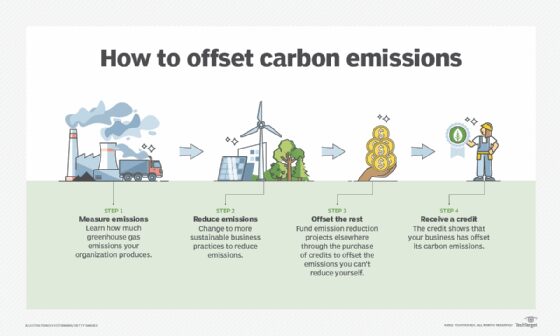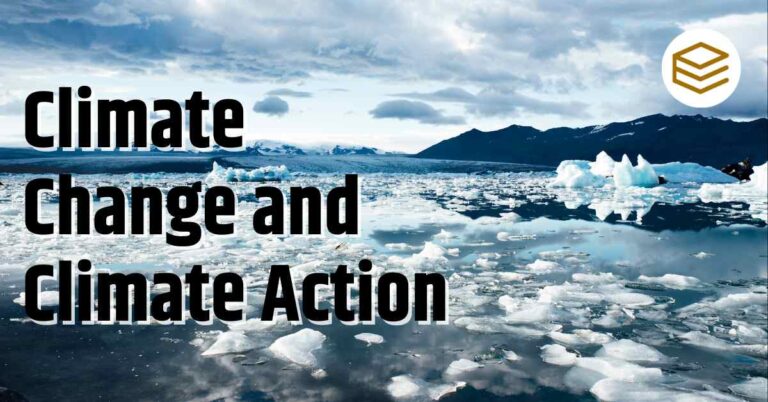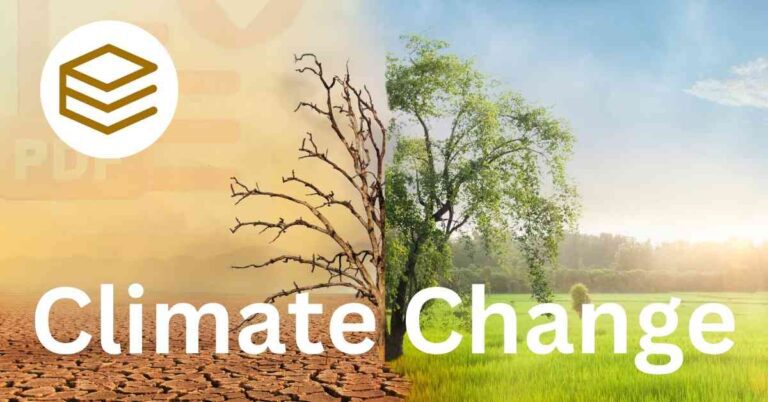December 2, 2025 11:05 am
The Kyoto Protocol is one of the most significant international agreements aimed at combating climate change by reducing greenhouse gas emissions. Adopted on December 11, 1997, in Kyoto, Japan, the protocol entered into force on February 16, 2005, after meeting the threshold for ratification by enough countries. It was an extension of the United Nations Framework Convention on Climate Change (UNFCCC), which was established at the Earth Summit in Rio de Janeiro in 1992.
Table of Contents
- Objective of the Kyoto Protocol
- Key Features of the Kyoto Protocol
- Significance and Impact of the Kyoto Protocol
- Challenges and Criticisms of the Kyoto Protocol
- Lessons Learned from the Kyoto Protocol
- Kyoto Protocol and India’s Position
- Current Relevance of the Kyoto Protocol
- Global Carbon Markets and Emission Trading Systems
- Important Predecessors and Successors of the Kyoto Protocol
- International Climate Conferences and Their Impact
- Scientific Basis and Climate Science Behind the Kyoto Protocol
- Criticisms and Controversies Surrounding the Kyoto Protocol
- Case Studies and Real-World Impacts
- Important Terms and Definitions
- Kyoto Protocol’s Legacy and Its Influence on Future Climate Policy
Objective of the Kyoto Protocol
The primary goal of the Kyoto Protocol was to reduce greenhouse gas (GHG) emissions in order to mitigate the adverse effects of global warming and climate change. The protocol set legally binding targets for industrialized nations and the European Union, requiring them to reduce their collective emissions of six key greenhouse gases by an average of 5.2% below 1990 levels during the first commitment period (2008–2012). The six main greenhouse gases regulated under the Kyoto Protocol are:
- Carbon Dioxide (CO₂)
- Methane (CH₄)
- Nitrous Oxide (N₂O)
- Hydrofluorocarbons (HFCs)
- Perfluorocarbons (PFCs)
- Sulfur Hexafluoride (SF₆)
Note: These gases are responsible for trapping heat in the Earth’s atmosphere, contributing to the greenhouse effect and global warming.
Key Features of the Kyoto Protocol
- Differentiated Responsibilities: The Kyoto Protocol was based on the principle of “common but differentiated responsibilities and respective capabilities (CBDR-RC).” This means that while all nations share the responsibility to combat climate change, developed countries (historically the largest emitters of greenhouse gases) bear a greater responsibility to reduce emissions.
- Annex I Countries: These are the industrialized and transition economies, including the United States, the European Union, Japan, Canada, Russia, Australia, and others, which were given legally binding emission reduction targets.
- Non-Annex I Countries: These are developing countries like India, China, and Brazil, which were not subject to legally binding emission reduction targets but were encouraged to take voluntary steps to reduce emissions.
- Commitment Periods: The Kyoto Protocol established two commitment periods:
- First Commitment Period (2008–2012): Industrialized countries committed to reducing their emissions by an average of 5.2% below 1990 levels.
- Second Commitment Period (2013–2020): Known as the Doha Amendment, this period was agreed upon in 2012. The reduction targets were increased, but several countries, including Japan, Canada, and Russia, chose not to participate in this second round.
- Flexibility Mechanisms: To help Annex I countries meet their targets more cost-effectively, the Kyoto Protocol introduced three market-based mechanisms:
- International Emissions Trading (IET): Also known as the carbon market, this mechanism allowed countries with excess emission units (emissions lower than their targets) to sell these credits to countries exceeding their targets. This created a global carbon trading market.
- Clean Development Mechanism (CDM): Under the CDM, developed countries could invest in sustainable development projects in developing countries and earn carbon credits, known as Certified Emission Reductions (CERs), which could be used to meet their own emission reduction targets. Examples include renewable energy projects, reforestation, and clean energy initiatives.
- Joint Implementation (JI): This mechanism allowed industrialized countries to invest in emission reduction projects in other industrialized or transition economies and earn Emission Reduction Units (ERUs).
- Compliance and Enforcement: The Kyoto Protocol established a Compliance Committee to ensure that countries adhered to their targets. If a country failed to meet its targets, it would be required to make up the shortfall in the next commitment period, plus an additional 30%, and would be suspended from participating in emissions trading.
Significance and Impact of the Kyoto Protocol
- Global Awareness: The Kyoto Protocol was the first major international agreement to address climate change with legally binding commitments, raising global awareness about the urgent need to reduce greenhouse gas emissions.
- Foundation for Future Agreements: The Kyoto Protocol laid the groundwork for future climate agreements, such as the Paris Agreement (2015), which aims to limit global warming to well below 2°C above pre-industrial levels, with efforts to limit the increase to 1.5°C.
- Investment in Clean Technology: The flexibility mechanisms, particularly the CDM, led to significant investments in renewable energy and clean technology in developing countries, promoting sustainable development.
Challenges and Criticisms of the Kyoto Protocol
- Limited Participation: Some major greenhouse gas emitters, like the United States, never ratified the protocol. The U.S. withdrew from the agreement in 2001, citing concerns over the economic impact and the exemption of developing countries from binding targets.
- Non-Compliance: Several countries, such as Canada, withdrew from the protocol in 2011, arguing that meeting their targets would be economically damaging. Canada’s emissions actually increased by about 30% since 1990 levels instead of decreasing.
- Insufficient Impact: Critics argue that the Kyoto Protocol did not do enough to curb global emissions, as it only covered a limited number of countries and did not include rapidly industrializing nations like China and India, which are now some of the world’s largest emitters.
- Economic Concerns: The costs of implementing emission reduction measures were a major concern for many countries. The protocol’s market-based mechanisms, while innovative, were also criticized for creating loopholes that allowed countries to avoid meaningful reductions.
Lessons Learned from the Kyoto Protocol
- Need for Inclusive Agreements: The exclusion of major developing countries highlighted the importance of creating agreements that are inclusive and address emissions from all significant sources.
- Flexibility Mechanisms: While these mechanisms were innovative, future agreements needed to ensure that carbon markets were transparent and not prone to manipulation.
- Shift Towards Long-Term Goals: The Kyoto Protocol’s focus on short-term targets showed the necessity of setting long-term, sustainable goals, which has been incorporated into subsequent agreements like the Paris Agreement.
Kyoto Protocol and India’s Position
- Voluntary Measures: As a Non-Annex I country, India did not have binding emission reduction targets but was active in the Clean Development Mechanism (CDM). India hosted several CDM projects, making it one of the top countries benefiting from this mechanism.
- Sustainable Development: India focused on promoting renewable energy projects, enhancing energy efficiency, and increasing forest cover as part of its climate action strategy.
Current Relevance of the Kyoto Protocol
- While the Kyoto Protocol has been largely replaced by the Paris Agreement, its legacy continues to influence international climate policies. The protocol demonstrated the importance of legally binding agreements and paved the way for more comprehensive climate action.
Global Carbon Markets and Emission Trading Systems
1. Carbon Credit Concept
- Definition: A carbon credit represents the right to emit one metric ton of carbon dioxide (CO₂) or an equivalent amount of another greenhouse gas. It is a tradable certificate that is part of the carbon trading market.
- Function: Countries or companies that reduce their emissions below their target can sell the surplus credits to those exceeding their limits. This incentivizes emission reductions and promotes a cost-effective approach to addressing climate change.

2. Carbon Offsetting
- Definition: A method where individuals or companies compensate for their emissions by funding an equivalent reduction of emissions elsewhere, often through projects like reforestation or renewable energy.
- Relevance: The concept of carbon offsetting emerged as a way to allow flexibility in meeting emission reduction targets, helping entities achieve their environmental goals while supporting sustainable development.

Important Predecessors and Successors of the Kyoto Protocol
1. Predecessors
- United Nations Framework Convention on Climate Change (UNFCCC): Adopted in 1992 at the Rio Earth Summit, the UNFCCC was the first major international treaty focused on climate change. It established a framework for negotiating specific agreements to stabilize greenhouse gas concentrations, leading to the Kyoto Protocol.
- Berlin Mandate (1995): An agreement at the First Conference of the Parties (COP1) in Berlin that set the stage for developing legally binding targets, which eventually culminated in the Kyoto Protocol.
2. Successors
- Paris Agreement (2015): Adopted at COP21, the Paris Agreement marked a significant shift from the Kyoto Protocol by involving both developed and developing countries in reducing emissions. It focuses on limiting global temperature rise to well below 2°C above pre-industrial levels, with efforts to limit it to 1.5°C.
- Durban Platform (2011): Established at COP17 in Durban, South Africa, this platform called for a new, more inclusive climate agreement, which led to the adoption of the Paris Agreement.
International Climate Conferences and Their Impact
1. Conference of the Parties (COP)
- Definition: The COP is the supreme decision-making body of the UNFCCC. It meets annually to assess progress in dealing with climate change and to negotiate new agreements or amendments.
- Notable COPs:
- COP3 (Kyoto, 1997): Where the Kyoto Protocol was adopted.
- COP15 (Copenhagen, 2009): Although it aimed for a comprehensive climate agreement, it failed to produce a legally binding treaty, highlighting the challenges of global climate diplomacy.
- COP21 (Paris, 2015): Resulted in the adoption of the Paris Agreement, which has been more successful in engaging global participation.
2. Role of IPCC Reports
- Intergovernmental Panel on Climate Change (IPCC): Established in 1988, the IPCC provides scientific assessments on climate change. Its reports, especially the Fourth Assessment Report (2007), played a crucial role in highlighting the urgency of climate action, influencing international agreements like the Kyoto Protocol.
Scientific Basis and Climate Science Behind the Kyoto Protocol
1. The Greenhouse Effect
- Explanation: The greenhouse effect is the process by which greenhouse gases in the atmosphere trap heat, keeping the Earth’s surface warmer than it would be without them. The Kyoto Protocol aimed to mitigate this effect by reducing emissions of key greenhouse gases, including CO₂, CH₄, and N₂O.
- Key Drivers: Human activities, such as burning fossil fuels, deforestation, and industrial processes, have significantly increased the concentration of greenhouse gases since the Industrial Revolution.
2. Climate Change Projections
- Importance of Scientific Models: Climate models have projected that, without significant reductions in greenhouse gas emissions, global temperatures could rise by 2°C to 6°C by the end of the 21st century. The Kyoto Protocol used these projections to emphasize the need for immediate action to curb emissions.
Criticisms and Controversies Surrounding the Kyoto Protocol
1. Uneven Commitments
- Developed vs. Developing Countries: Critics argued that the protocol placed a disproportionate burden on developed nations while allowing major emitters among developing countries, such as China and India, to continue increasing their emissions. This led to concerns about fairness and effectiveness.
2. Economic Impact
- Concerns from Industrialized Nations: Many industrialized countries were worried about the economic implications of meeting emission reduction targets. For example, industries in the United States argued that compliance would increase costs and reduce competitiveness, contributing to the U.S. decision not to ratify the protocol.
3. Carbon Market Issues
- Manipulation and Inefficiencies: The carbon trading mechanisms were subject to criticism for being susceptible to manipulation. Some projects under the Clean Development Mechanism (CDM) were accused of not delivering real emission reductions or benefiting large corporations at the expense of local communities.
Case Studies and Real-World Impacts
1. European Union’s Implementation
- The European Union Emission Trading Scheme (EU ETS) was launched in 2005 as a key instrument to meet the Kyoto targets. It became the world’s largest carbon market, demonstrating both the potential and the challenges of emissions trading.
- Successes: The EU ETS helped the European Union meet its Kyoto targets and provided valuable lessons for improving carbon markets globally.
- Challenges: Early phases of the EU ETS saw an oversupply of emission allowances, leading to a collapse in carbon prices and reduced effectiveness.
2. Impact on Developing Countries
- India and the CDM: India emerged as one of the leading beneficiaries of the Clean Development Mechanism, hosting thousands of projects related to renewable energy, energy efficiency, and sustainable forestry. These projects contributed to local economic development and job creation.
- China’s Role: China also played a major role in the CDM, attracting significant investment in clean energy projects. However, there were concerns that some projects may have been artificially inflating emissions before reducing them to earn more carbon credits.
Important Terms and Definitions
1. Cap-and-Trade System
- Definition: An environmental policy tool that controls large amounts of emissions from multiple sources by setting a limit (cap) and allowing trading of emission permits.
- Relevance: The Kyoto Protocol’s flexibility mechanisms, like International Emissions Trading, are based on the cap-and-trade principle.
2. Carbon Sink
- Definition: A natural or artificial reservoir that absorbs more carbon dioxide than it releases. Forests, oceans, and soil are the main natural carbon sinks.
- Importance: The Kyoto Protocol encouraged afforestation and reforestation as ways to increase carbon sinks and reduce overall greenhouse gas concentrations.
3. Leakage
- Definition: The situation where efforts to reduce emissions in one country or sector lead to an increase in emissions elsewhere. For example, strict regulations in one country may cause industries to relocate to countries with laxer environmental laws.
- Challenge: Addressing leakage is critical for ensuring that global emission reduction efforts are effective.
Kyoto Protocol’s Legacy and Its Influence on Future Climate Policy
1. Evolution to the Paris Agreement
- The Kyoto Protocol provided valuable lessons that shaped the Paris Agreement, particularly the need for a more inclusive approach that includes both developed and developing countries in meaningful climate action.
2. Advancements in Climate Negotiations
- The protocol demonstrated the importance of international cooperation, transparency, and accountability in climate negotiations. It also underscored the challenges of aligning environmental goals with economic interests.
Exam Tips for Kyoto Protocol:
- Remember Key Dates: Adoption in 1997, entry into force in 2005, and the end of the first commitment period in 2012.
- Focus on the Flexibility Mechanisms: Understand how each mechanism works, as questions may ask about carbon markets, CDM projects, or emissions trading.
- Know the Criticisms: Be prepared to discuss the limitations of the protocol, such as non-participation by key countries and the economic impact on industrialized nations.
- Compare with Paris Agreement: Understand the differences between the Kyoto Protocol and the Paris Agreement, especially in terms of scope, commitments, and global participation.




